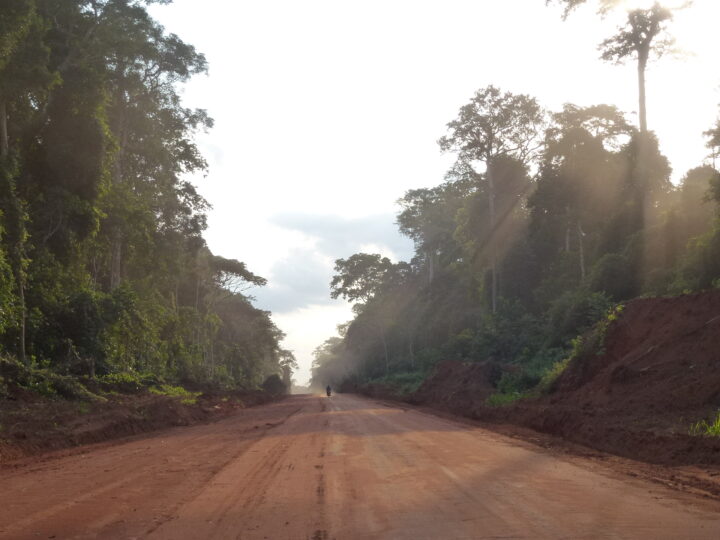
In a recent article, we described a study of how road networks in the Congo Basin have changed over the past 15 years and how they have affected deforestation rates. Those networks have grown significantly, but not all roads lead to long-term forest destruction. By closing roads when they are no longer needed, people can help avoid permanent damage to the forest.
Though the researchers conducted much of their research via remote sensing and computer work, they also made several trips into the Congo Basin. Their photos shed more light on some of the economic activities in the rainforest.
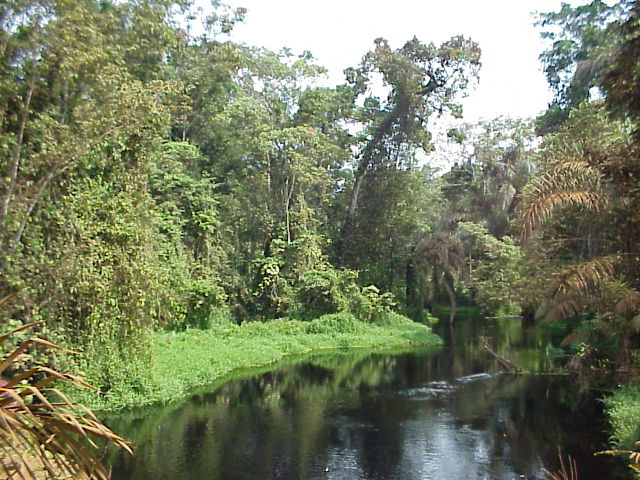
The Congo Basin is covered by tropical rainforests and swamps and is famous for its rich biodiversity. At two million square kilometers (1.2 million square miles), the Congo rainforest is the second largest in the world and about the size of Mexico. The image above shows a forested area near a stream in the Republic of Congo.
As road networks have expanded, the roads are bringing people deeper into the jungle and closer to wildlife. In general, forest roads lead to more human activity and to unregulated or destructive events, such as poaching, mining, or illegal logging. The image below demonstrates how roads are encroaching on wildlife habitats.
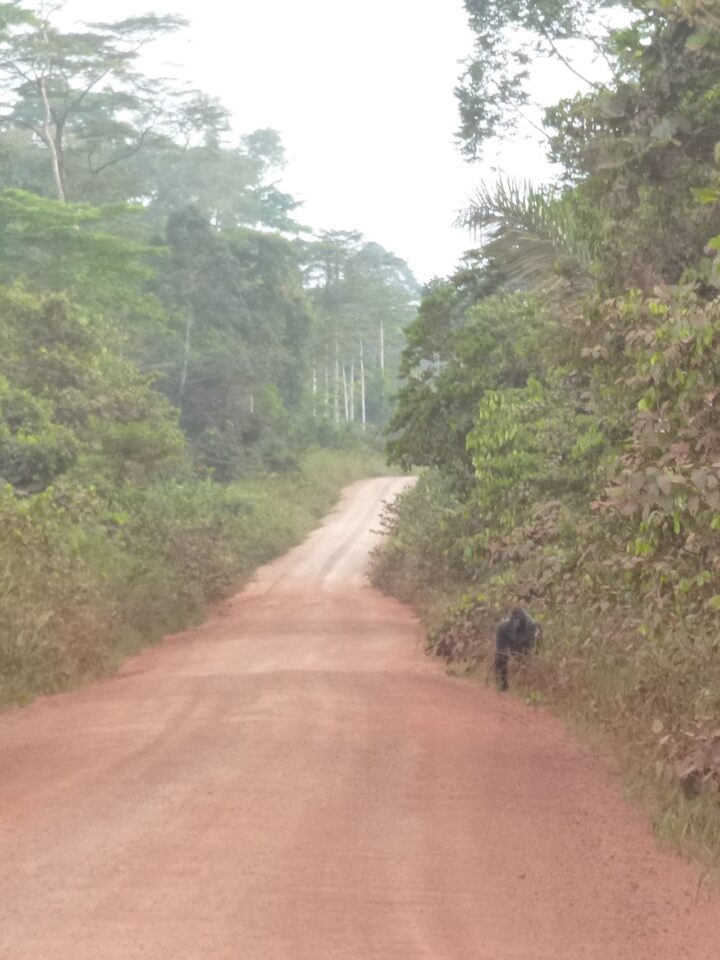
The majority of new roads are built for selective logging activities, which is one of the main economic activities in the rainforest. Companies practice selective logging where only the most valuable tree species are cut, which usually results in cutting one tree per hectare on average. In order to harvest this timber though, the companies must build roads, usually unpaved, that allow the trucks and tractors to drive deep into the forest. The photos below show scenes of timber extraction and a timber yard.
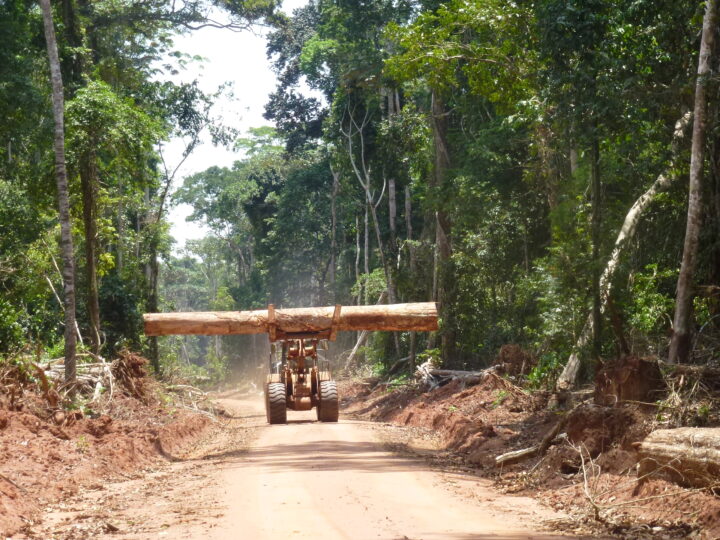
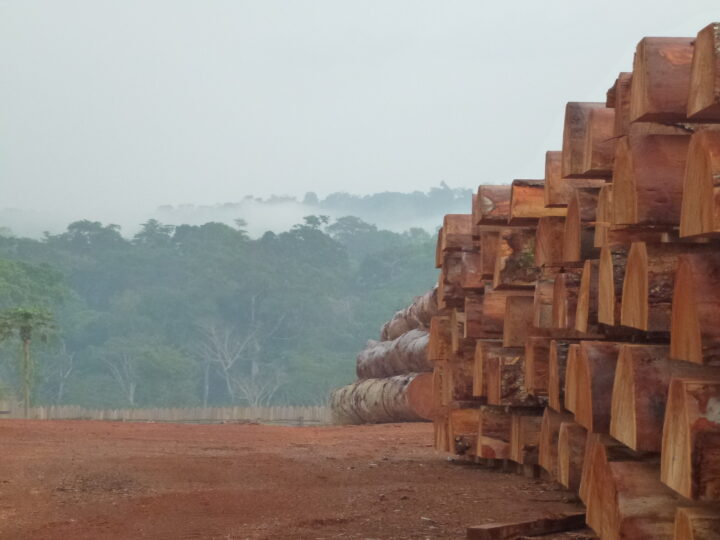
Sometimes roads are used by farmers to reach further into the forest and establish small-scale agricultural plots. The image below shows a small landholder in a forest near Mbandaka in the Democratic Republic of Congo. The woman is carrying a basket of manioc (cassava). She is also holding a maranthaceae leaf, which is commonly used for wrapping and cooking on a fire.
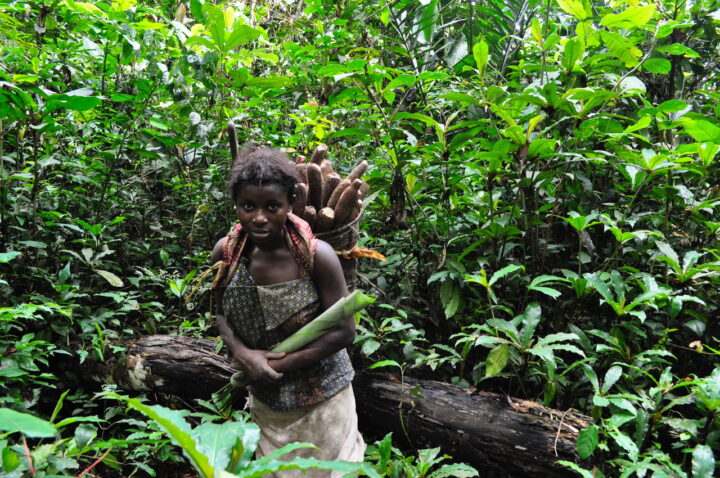
In the recent study, the researchers found that deforestation rates were highest around older, open roads. Specifically, the highest rates were found in the Democratic Republic of Congo due to agriculture and a high population density.
Researchers showed deforestation rates were the lowest around abandoned or closed roads. Abandoned roads reduce human traffic and allow vegetation to grow over the dirt path. The image below shows an abandoned road in the Republic of Congo that is overgrown with regenerating trees and plants. These plant species pictured are popular for gorillas to feed on and can help restore the gorillas’ natural habitat.
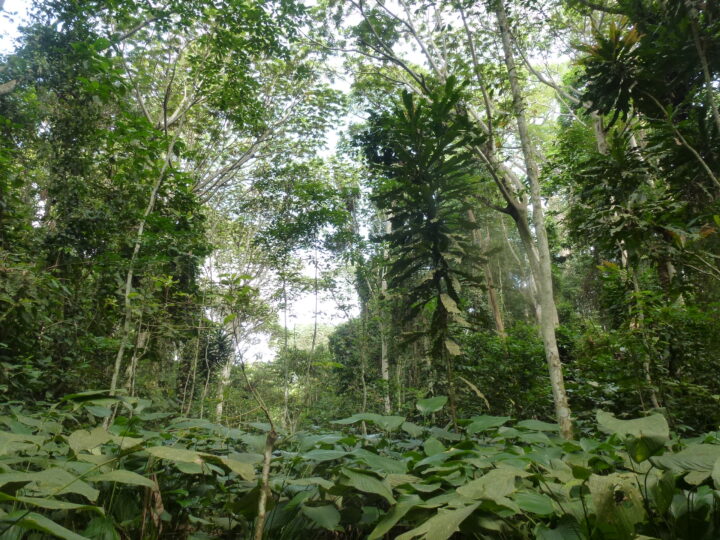
Abandoned roads were most commonly found inside logging concession areas. After a logging company was no longer using the road, the road was often closed or abandoned. Sometimes the road can be closed off by simply using a log to prevent vehicles from entering, as shown below.
To read the accompanying article, click here: When a Road Leads to Deforestation





VERY SAD FOR THE BIODIVERSITY.
Good to know this. Congolese are naturally wealthy. The weather itself is promising to do good farming. I love this land of Congolese…. Zaire